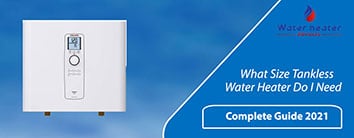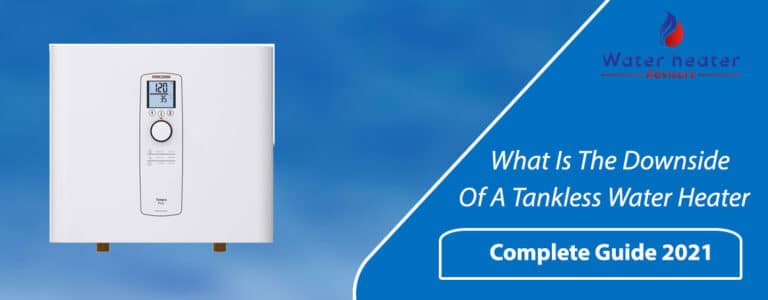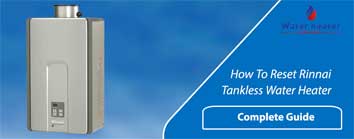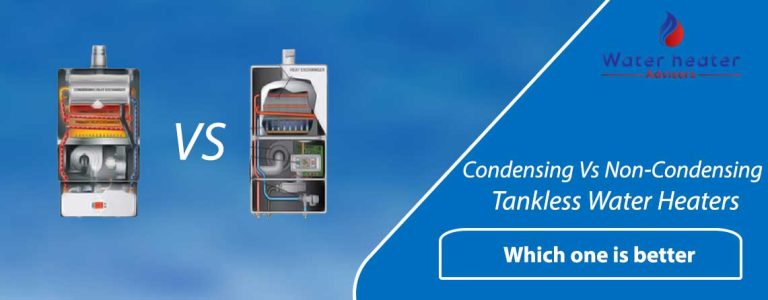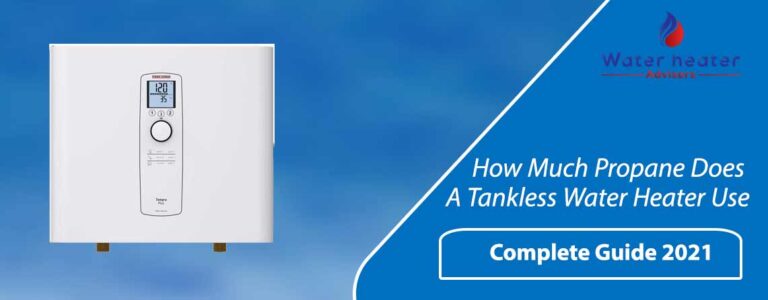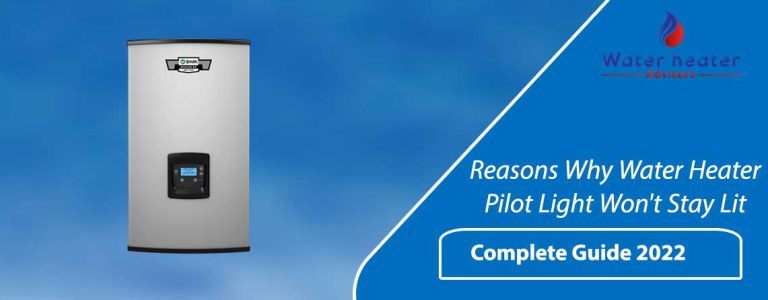How To Convert RV Water Heater To Tankless? Step By Step Instructions
RVs (recreational vehicles) are renowned as mobile homes. If you are an adventurous soul and want to dump your hectic life for some time, you should undoubtedly invest money on RV and also learn about how to convert RV water heater to tankless gas.
RVs are designed to fulfill all the basic needs you enjoy in your traditional houses, such as food storage, beds, warm water, electricity, etc. Among all the fundamental requirements, water is an imperative utility used for cooking, showering, cleaning, and drinking.
People who love to have adventures on the roads and enjoy thrilling activities, including trekking and biking, really like to take a shower after spending all day in the outdoors.
A traditional storage water heating unit could put a glitch in that warm water bath enjoyment. A few gallons of water deposited in your RV might not be enough for four to five people riding on it.
So, have you deliberated about the solution? If not, then let us give you a convenient and comfortable solution—-go tankless. It doesn’t contain a tank but heats the water rapidly using a heat exchanger.
If you deploy it, you will obtain on-demand hot water without having to wait for extended periods. These units are intended to provide between two to five gallons of water in a minute. It only takes a few seconds to acquire warm water to enjoy your Roman bath.
However, bear in mind that tankless heaters are costly. So, if you have a tight budget, why don’t you make the one yourself? Of course, the replacement or deployment process is not so easy.
That’s why; in this guide; we are going to provide you DIY instructions on how to convert RV water heater to tankless cheap. So, continue reading.
How To Convert RV Water Heater To Tankless For Shower?
Detach All The Supplies
The initial step of converting the RV heater to tankless is to detach all the water, gas, propane, and electricity supplies to the existing unit. Then, visit the location where you would like to mount the heater.
If you are already using a tankless unit, it may be placed outside the recreational vehicle (RV). However, if you deploy it for the first time, you should select an easily reachable area.
Drain The Tank
After removing all the supplies, now, you have to drain the current unit. Before doing that, confirm that water’s outflow will not damage nearby items or cause electrical short circuits. Find out the drain valve, open it, and allow the container to drain wholly.
Remove The Old Heater
The next step of converting the RV water heater to tankless issues is to unscrew the current unit. You can use a screwdriver or drill for this purpose. It should fit the existing heater’s screws.
Then, rely on the seal scraper to cut the unit’s seal cautiously. If the caulking is still stuck to the sides and corners of the heater, scrape it off. After that, gently take the seal out.
This task will take only a few minutes, but perform it methodically to remove the heater from its deployment. Be careful about not scratching off the RV paint with the seal. Finally, remove the current heater with caution.
Clean The Area
Before starting the installation process, don’t forget to clean the area. Eliminate all sorts of dirt and debris and wipe off the old seals. Make sure there are no residues left in the installation area.
The opening you have should be of the accurate size. Always buy a heater that perfectly fits the current dimensions. It would help if you prepared the opening for the new deployment.
To calculate the unit dimensions, you can take advantage of the measuring tape. After taking measurements, make a hole in the exterior of the RV.
Mount The New Heater
After finishing all the preparation steps, the time has come to place the new heater in its chosen location. First of all, look for the gaps and seal them. Then, place the door with appropriate orientation and tighten all the screws.
Again, seal the gaps for closing externally. After completing this procedure, you will see two wires: red and black. The red one will be attached to the “park,” and the black one will be connected to the “ground.”
Then, attach the hot and cold water lines to the tankless system. Now, recite the manual provided by the manufacturer and follow the steps to install the control panel. The control panel can be similar to the conventional storage unit’s control panel.
Post-Installation Inspection
Once you are done with the installation process, the final step of converting the RV water heater to a tankless kit is to examine if the control panel is functioning correctly. If yes, you are allowed to turn on the water heater outlets.
It is advised to adjust the heater to a lower temperature. There’s no need to add an excessive amount of cold water in the tankless heater. Before regulating the temperature, test the running water’s temperature and set the temperature closer.
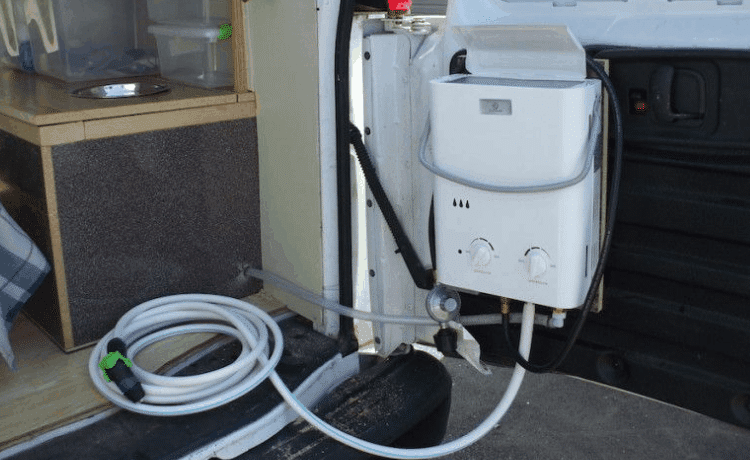
Important Considerations Before Converting RV Water Heater To Tankless
Before getting started, the most critical thing you have to do is pick an appropriate size of the tankless water heater you want to install. Also, determine how many individuals will utilize the warm water from the container at one time.
Depending on the folks, find out your water demands and see which tankless unit can deliver the required water. You can use the same method to pick the right size of a tankless system for your apartment or office.
Some RVs have a tank that provides six to twelve gallons of water per minute, but that amount is not enough for 6 to 8 people. The tankless unit can be mounted at any available space in the RV.
However, if you want to opt for a dedicated RV model, the tankless system will be fixed on the panel. The natural gas and propane heater must be properly vented.
If you are going to deploy it on the external panel, the venting system should be cut out. If you do not cut it out, it will vent through the wall directly.
6 Reasons To Convert RV Water Heater To Tankless
Get Hot Clean Water Instantly
The biggest reason to convert the RV heater to Tankless is that you can acquire an unlimited supply of warm, clean water for drinking and showering.
The traditional heater stocks water in the tank for a long time, so it becomes dirty. However, the tankless unit doesn’t deposit water inside a container, so there are no bacterial development chances.
Say Goodbye To Cold Showers
If more than four people are riding on the RV, odds are the battle for warm water rages on. It’s nearly impossible to try to fit everybody’s schedule without someone ending up with freezing water.
If you deploy the tankless system, this problem will be solved immediately. They heat water promptly as it travels through the unit rather than reserving it in the tank. So, there are little chances of running out of warm water.
Energy Efficient
Another reason to install the tankless heater in the RV is that you could save a lot of energy. They use a minimal amount of gas, so you get to spend less money on fuel. Sometimes, gas or propane is costly, so using a tankless system can be an excellent choice for you.
Save Space In The RV
You are well-aware that RVs have minimal space. Therefore, replacing the tank with a tankless heater is an outstanding option for you. They don’t have more giant tanks, so they can help you to free up some space inside the RV.
No Leakage
Sometimes, the tank storage water heater starts to leak all over the RV. It is one of the most unfortunate situations for RVers. But, with a tankless system, you won’t have to deal with this issue as it doesn’t store water in the container. There will be minimal damage in case if a sprinkle of the leak is discovered.
Last Longer
The great news is that it can be your adventurous road trip buddy for more than fifteen to twenty years. However, storage heaters can last for up to 7 to 8 years only. The absence of a tank plays an imperative role in its longevity.
Disadvantages Of Converting RV Heater To Tankless
Conclusion
The popularity of tankless water heating systems is increasing over time among the RV owners. It is worth spending money on purchasing and deploying a tankless unit inside the RV because it can help you save energy and money at the end of the day.
So, what are you waiting for? Follow the process as mentioned above of how to convert RV water heater to tankless and electric. Hit the road with a limitless supply of warm water and have a wonderful life.


